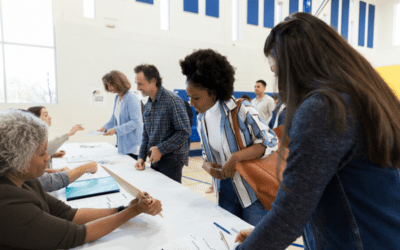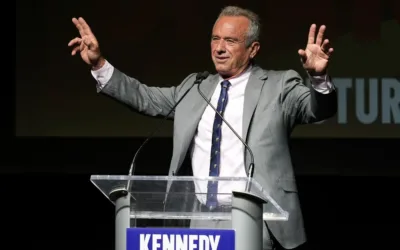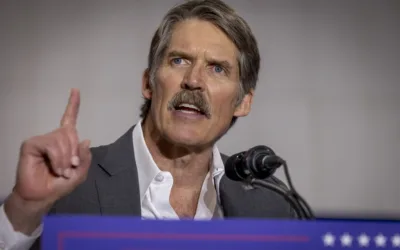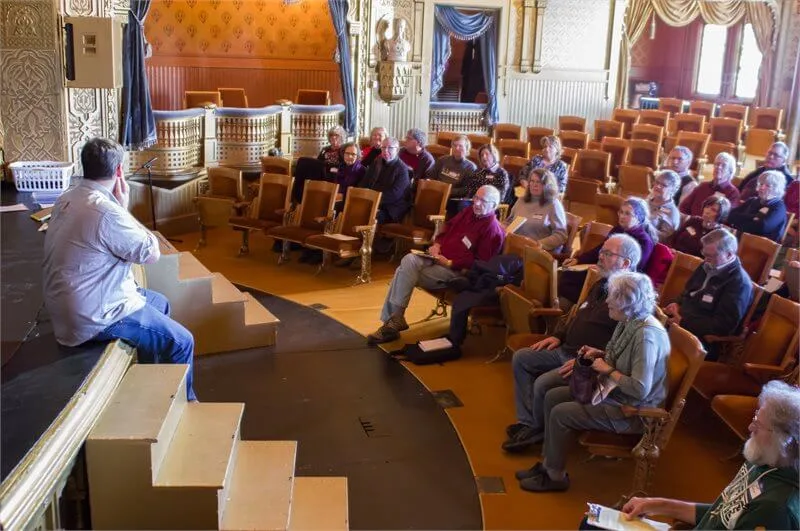
#image_title
Even in a competitive swing state, political campaigning in the COVID-19 era poses many challenges.
As they gathered virtually, because of coronavirus concerns, for a meeting on Oct. 24, members of the Dunn County Democratic Party didn’t need reminding of the importance of the presidential election that would occur just 10 days later.
Party members have known for some time their mostly rural county in west-central Wisconsin, about an hour east of Minneapolis, could be key to determining the vote for president in a swing state that could decide the election’s outcome.
Dunn County is one of 23 so-called “pivot counties” in Wisconsin in which voters supported Democrat Barack Obama for president in 2008 and 2012, then backed Republican President Donald Trump four years ago. Trump won Wisconsin by fewer than 23,000 votes, and political analysts said the vote in pivot counties could well decide who will win the state, and possibly the presidency.
Despite the coronavirus pandemic that has impacted virtually every aspect of life this year, including political elections, those 23 counties–among 206 in the nation that switched from Obama to Trump–could still play a significant role in determining the outcome of the presidential race in Wisconsin and the nation.
Many political activists and analysts point to the vote of Wisconsin’s pivot counties as an indicator of whether Trump or his Democratic challenger, former Vice President Joe Biden, will win the state. Most of those counties are in western and northern Wisconsin, and, like Dunn County, are mostly rural.
If the vote in those locations that backed Trump in 2016 supports Biden, it may well be enough for the Democrat to carry the state, given Trump’s 1% margin of victory in Wisconsin last presidential election. Those counties could have a bigger say in the state’s election results if Milwaukee voter turnout is down as it was in 2016, analysts said.
“How the election goes here certainly could help determine who wins in Wisconsin, and Wisconsin could determine who wins overall,” said Bill Hogseth, president of the Dunn County Democratic Party.
The latest Marquette Law School poll released Wednesday shows Democratic presidential nominee Joe Biden with a lead of 48% to 43% over Trump, a 5-point gap that has held steady in recent weeks. However, 8% of voters said they are undecided or did not want to reveal who they will vote for.
Hogseth said he and fellow Dunn County Democrats aren’t taking anything for granted, even with Biden leading in polls. He said there appears to be a “high level of enthusiasm” for Trump among his supporters.
“I don’t sense that same level of enthusiasm for Biden,” Hogseth said. “But I do sense a very strong commitment on the part of many people to get Biden elected because they don’t want Trump as president any longer.”
Wisconsin Republicans said the many Trump election signs lining rural roads are evidence of the strong support the president maintains in those locations. Larry Pabst, a 58-year-old “lifelong Republican” who lives east of the Trempealeau County city of Galesville, is quick to point out that political polls prior to the 2016 presidential election showed Democrat Hillary Clinton leading Trump before his surprise victory.
“For whatever reason the polls don’t accurately reflect President Trump’s support. They downplay it,” said Pabst, who predicted Trump will win Wisconsin and the presidency in the Nov. 3 election. “When I drive through the countryside, I see all of these signs for Trump and not that many for the other guy. I think a lot of people are going to be in for a surprise with the outcome of this election.”
While Trump carried the 23 pivot counties in 2016, voters shifted more Democratic two years later, when a slight majority of votes cast statewide were for Democrats and Tony Evers defeated Scott Walker to become governor.
That move toward Democrats may still be in place and could explain Biden’s edge over Trump in polls, said Geoff Peterson, chairman of the political science department at UW-Eau Claire. But Peterson said he’s leery about assigning too much value to any election trend this year for a simple reason: the coronavirus pandemic.
“COVID-19 throws everything out the window,” Peterson said. “You can’t necessarily rely on what has happened with elections in the past.”
Driven in part by a record number of absentee ballots being cast, voter turnout is predicted to be high in Wisconsin and across the country, a fact that could reduce the impact of the relatively sparsely populated pivot counties, Peterson said. For instance, higher votes cast in Milwaukee, even by 5 or 10 percent more than in 2016, is as many total votes in pivot counties, he said.
Early voting could complicate the role of pivot counties as well, Peterson said, and the counties that could end up determining the outcome in Wisconsin might be different than those initially thought.
“This election is a once-in-a-blue-moon sort of event,” he said. “I don’t think we can really rely on previous models because COVID-19 changes everything. There are some predictions being made, but who knows how this is going to go.”
Regardless of which presidential candidate wins on Nov. 3, members of both political parties said this campaign season has been like no other. Hogseth’s Dunn County group has been meeting virtually since COVID-19 surfaced in the spring. Instead of in-person events and door knocking, they and many political organizations and candidates have relied instead on phone calls, mailers and social media to get out their message.
Some Democratic political candidates have refrained from in-person events while campaigning, while others have gone door to door but said they donned masks. Some Republican candidates said they have done similarly, while others connected with people face-to-face without masks, a sign that even wearing a mask has become a political issue.
“It’s certainly been a very different year,” Hogseth said. “It’s been challenging to run campaigns amid a pandemic. How do you know if you’re having an impact? Sometimes it’s tough to tell. I guess we’ll find out how we did after Election Day.”

New Biden rules deliver automatic cash refunds for canceled flights, ban surprise fees
In the aftermath of a canceled or delayed flight, there’s nothing less appealing than spending hours on the phone waiting to speak with an airline...
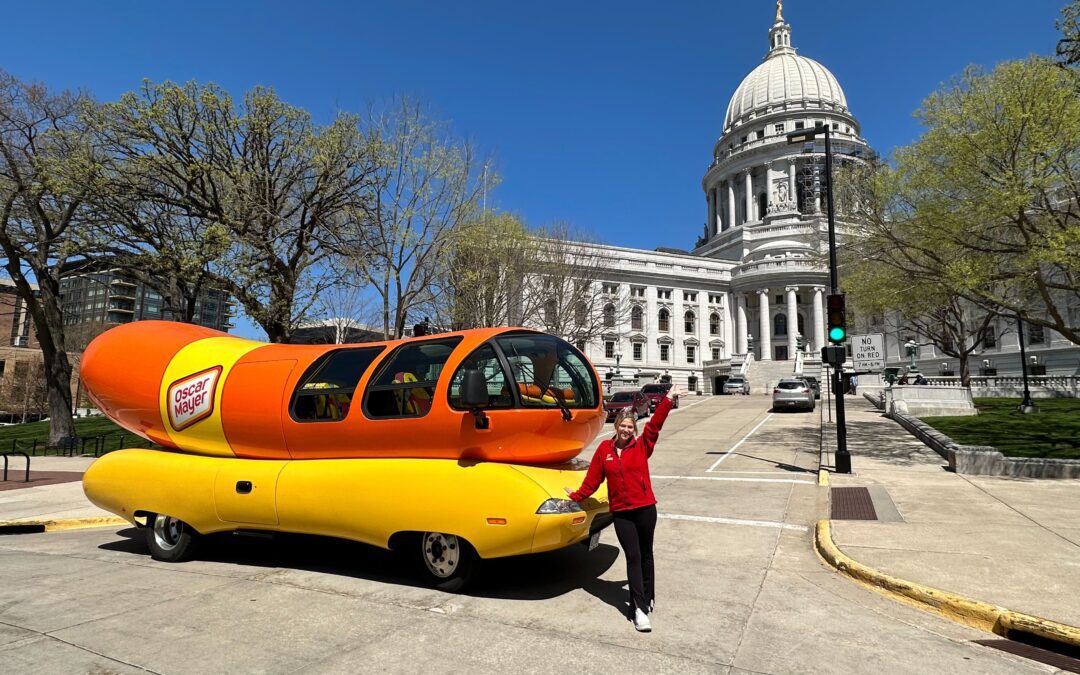
One year on the Wienermobile: The life of a Wisconsin hotdogger
20,000+ miles. 16 states. 40+ cities. 12 months. Hotdogger Samantha Benish has been hard at work since graduating from the University of...

Biden makes 4 million more workers eligible for overtime pay
The Biden administration announced a new rule Tuesday to expand overtime pay for around 4 million lower-paid salaried employees nationwide. The...
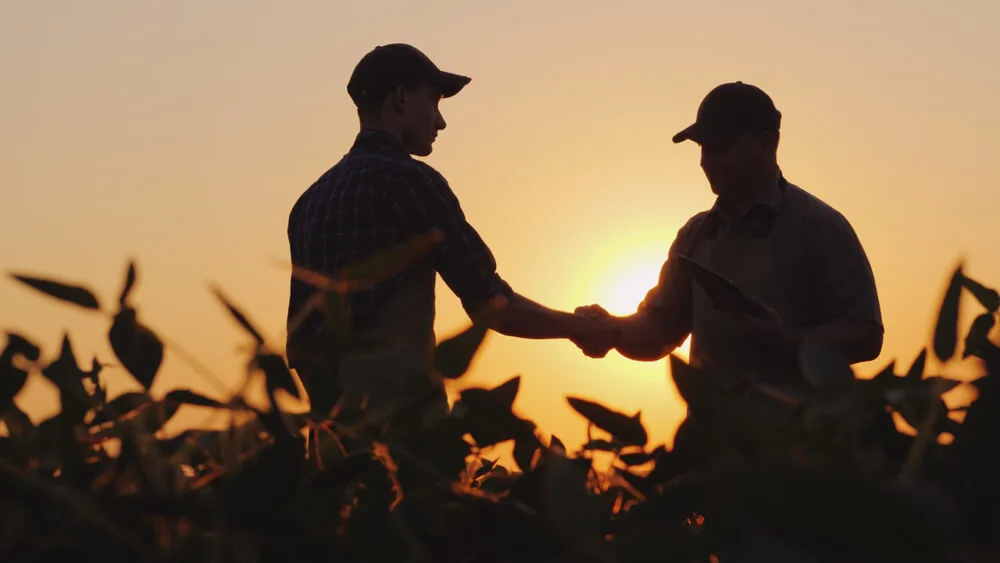
‘Radical’ Republican proposals threaten bipartisan farm bill, USDA Secretary says
In an appearance before the North American Agricultural Journalists last week, United States Department of Agriculture (USDA) Secretary Tom Vilsack...


